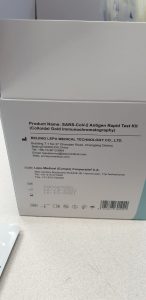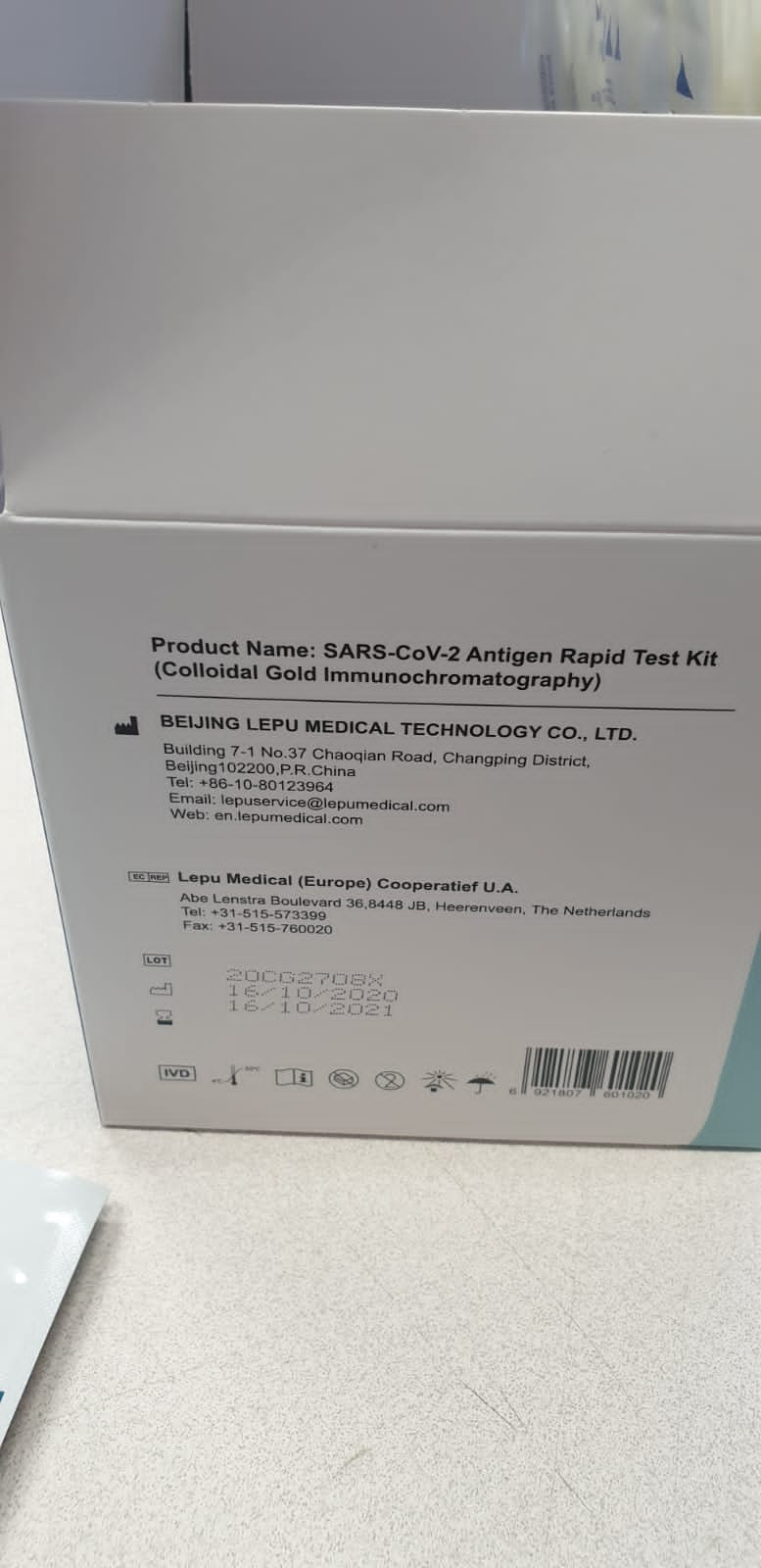Breast fibroepithelial lesions are biphasic tumors which comprise the frequent benign fibroadenomas (FAs) and the rarer phyllodes tumors (PTs). This examine analyzed 262 (42%) standard FAs, 45 (7%) mobile FAs, and 321 (51%) benign PTs contributed by the International Fibroepithelial Consortium, utilizing a beforehand curated 16 gene panel. Benign PTs have been discovered to own a better variety of mutations, and larger charges of most cancers driver gene alterations than each teams of FAs, specifically MED12, TERT promoter, RARA, FLNA, SETD2, RB1, and EGFR.
Cases with MED12 mutations have been additionally extra more likely to have TERT promoter, RARA, SETD2, and EGFR. There have been no vital differences detected between standard FAs and mobile FAs, apart from PIK3CA and MAP3K1. TERT promoter alterations have been most optimum in discriminating between FAs and benign PTs. Our examine affirms the function of sequencing and key mutations that will help in refining diagnoses of those lesions.
From allozymes to NGS: inhabitants genetics of forest bushes in Slovakia prior to now 40 years
This evaluation summarizes the event of inhabitants genetics and inhabitants genomics research of forest bushes in Slovakia in the course of the previous 40 years. Various protein and DNA markers have been utilized throughout this era to deal with a number of matters in evolutionary genetics and biogeography of bushes: allozymes, uniparentally inherited chloroplast and mitochondrial markers, easy sequence repeats and single nucleotide polymorphisms.
The principal object of research of phylogeny and postglacial migration have been Fagus sylvatica s.l. and eastern-Mediterranean firs (Abies Mill. part Abies), the place the divergence of genetic lineages (species and subspecific taxa) in time, in addition to colonization of the present ranges in the course of the Holocene have been reconstructed. The research on intraspecific gene movement and homoploid hybridization centered on hybrid swarms Pinus sylvestris/P. mugo and firs. Unusual maternal inheritance of chloroplast DNA was revealed in P. mugo × P. sylvestris crosses.
Contrasting geographical constructions of hybrid zones have been revealed in wind-dispersed vs. animal-dispersed bushes. Within the research of adaptation, alerts of choice have been recognized each in discipline observations and common-garden experiments on Picea abies, F. sylvatica and A. alba. Perspectives of ongoing analysis using next-generation sequencing have been shortly outlined.
Structural elements of rod opsin and their implication in genetic illnesses
Vision in dim-light situations is triggered by photoactivation of rhodopsin, the visible pigment of rod photoreceptor cells. Rhodopsin is manufactured from a protein, the G protein coupled receptor (GPCR) opsin, and the chromophore 11-cis-retinal. Vertebrate rod opsin is the GPCR finest characterised on the atomic stage of element.
Since the discharge of the primary crystal construction 20 years in the past, an enormous variety of constructions have been launched that, together with worthwhile spectroscopic determinations, unveiled most elements of the photobleaching course of. Numerous spontaneous mutations of rod opsin have been discovered linked to vision-impairing illnesses like autosomal dominant or autosomal recessive retinitis pigmentosa (adRP or arRP, respectively) and autosomal congenital stationary evening blindness (adCSNB). While adCSNB is especially attributable to constitutive activation of rod opsin, RP reveals extra variegate determinants affecting completely different elements of rod opsin operate.
The overwhelming majority of missense rod opsin mutations impacts folding and trafficking and is linked to adRP, an incurable illness that awaits gentle on its molecular construction determinants. This evaluation article summarizes all main structural info out there on vertebrate rod opsin conformational states and the insights gained up to now into the structural determinants of adCSNB and adRP linked to rod opsin mutations. Strategies to design small chaperones with therapeutic potential for chosen adRP rod opsin mutants will probably be mentioned as effectively.
Action detection utilizing a neural community elucidates the genetics of mouse grooming habits
Automated detection of complicated animal behaviors stays a difficult drawback in neuroscience, notably for behaviors that include disparate sequential motions. Grooming is a prototypical stereotyped habits and is commonly used as an endophenotype in psychiatric genetics. Here, we used mouse grooming habits for instance and developed a common function neural community structure able to dynamic motion detection at human observer-level efficiency and working throughout dozens of mouse strains with excessive visible variety.
We present insights into the quantity of human annotated coaching information which are wanted to attain such efficiency. We surveyed grooming habits within the open discipline in 2,457 mice throughout 62 strains, decided its heritable elements, carried out GWAS to stipulate its genetic structure, and carried out PheWAS to hyperlink human psychiatric traits through shared underlying genetics. Our common machine studying resolution that robotically classifies complicated behaviors in giant datasets will facilitate systematic research of behavioral mechanisms.
Shared genetic structure throughout psychiatric problems
Psychiatric problems overlap considerably on the genetic stage, with family-based strategies lengthy pointing towards transdiagnostic threat pathways. Psychiatric genomics has progressed quickly within the final decade, shedding gentle on the organic make-up of cross-disorder threat at a number of ranges of research. Over 100 genetic variants have been recognized that have an effect on a number of problems, with many extra to be uncovered as pattern sizes proceed to develop.
Cross-disorder mechanistic research construct on these findings to cluster transdiagnostic variants into significant classes, together with in what tissues or when in improvement these variants are expressed. At the upper-most stage, strategies have been developed to estimate the general shared genetic sign throughout pairs of traits (i.e. single-nucleotide polymorphism-based genetic correlations) and subsequently mannequin these relationships to determine overarching, genomic threat components.
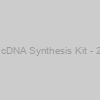 AzuraQuant cDNA Synthesis Kit - 25 Reactions |
|
AZ-1995 |
Real Time Primers |
25 Reactions |
EUR 183.6 |
 Monkeypox Virus Real Time PCR Kit |
|
PDPS-AR064 |
Creative Biogene |
1 unit |
Ask for price |
|
Description: Creative Biogene Monkeypox Virus Real Time PCR Kit is used for the detection of monkeypox Virus in serum or lesion exudate samples by using real time PCR systems. Monkeypox virus (MPV) is a double-stranded DNA, zoonotic virus and a species of the genus Orthopoxvirus in the family Poxviridae. It is one of the human orthopoxviruses that includes variola (VARV), cowpox (CPX), and vaccinia (VACV) viruses. The kit contains a specific ready-to-use system for the detection of the monkeypox Virus. Fluorescence is emitted and measured by the real time systems' optical unit during the PCR. |
 Monkeypox Virus Real Time PCR Kit |
|
YJC70115NW-25T |
Jiangsu Bioperfectus Technologies |
25 tests/kit |
Ask for price |
|
Description: The Bioperfectus Monkeypox Virus Real Time PCR Kit is an in vitro diagnostic test, based on real-time PCR technology, for the detection of DNA from the Monkeypox virus. Specimens can be obtained from human serum, lesion exudate samples and scab. BSL-2 facilities with standard BSL-2 work practices may be used for the test of t he Monkeypox virus. |
 Monkeypox Virus Real Time PCR Kit |
|
ZD-0076-01 |
Gentaur Genprice |
25 tests/kit |
Ask for price |
|
|
|
Description: Monkeypox virus is the virus that causes the disease monkeypox in both humans and animals. Monkeypox virus is an Orthopoxvirus, a genus of the family Poxviridae that contains other viral species that target mammals. The virus is mainly found in tropical rainforest regions of central and West Africa. The primary route of infection is thought to be contact with the infected animals or their bodily fluids. The genome is not segmented and contains a single molecule of linear double-stranded DNA, 185000 nucleotides long. The Monkeypox Virus real time PCR Kit contains a specific ready-to-use system for the detection of the Monkeypox Virusthrough polymerase chain reaction (PCR) in the real-time PCR system. The master contains reagents and enzymes for the specific amplification of the Monkeypox Virus DNA. Fluorescence is emitted and measured by the real time systems ́ optical unit during the PCR. The detection of amplified Monkeypox Virus DNA fragment is performed in fluorimeter channel 530nm with the fluorescent quencher BHQ1. DNA extraction buffer is available in the kit and serum or lesion exudate samples are used for the extraction of the DNA. In addition, the kit contains a system to identify possible PCR inhibition by measuring the 560nm fluorescence of the internal control (IC). An external positive control defined as 1×10^7 copies/ml is supplied which allow the determination of the gene load. |
 Monkeypox Virus Real Time PCR Kit |
|
ZD-0076-02 |
Gentaur Genprice |
25 tests/kit |
Ask for price |
|
|
|
Description: Monkeypox virus is the virus that causes the disease monkeypox in both humans and animals. Monkeypox virus is an Orthopoxvirus, a genus of the family Poxviridae that contains other viral species that target mammals. The virus is mainly found in tropical rainforest regions of central and West Africa. The primary route of infection is thought to be contact with the infected animals or their bodily fluids.The genome is not segmented and contains a single molecule of linear double-stranded DNA, 185000 nucleotides long.The Monkeypox Virus real time PCR Kit contains a specific ready-to-use system for the detection of the Monkeypox Virusthrough polymerase chain reaction (PCR) in the real-time PCR system. The master contains reagents and enzymes for the specific amplification of theMonkeypox VirusDNA. Fluorescence is emitted and measured by the real time systems ́ optical unit during the PCR. The detection of amplified Monkeypox Virus DNA fragment is performed in fluorimeter channelFAM with the fluorescent quencher BHQ1. DNA extraction buffer is available in the kit and serum or lesion exudate samples are used for the extraction of the DNA. In addition, the kit contains a system to identify possible PCR inhibition by measuring the HEX/VIC/JOE fluorescence of the internal control (IC). An external positive control defined as 1×107copies/ml is supplied which allow the determination of the gene load. |
 0.2ML CLEAR STRIP CAPS FOR REAL TIME PCR |
|
PCR-2CP-RT-C |
CORNING |
125/pk |
EUR 267.6 |
|
Description: PCR Plates & Tubes; PCR Strip Tubes and Strip Caps - Axygen |
 Azura PureView 1 Kb DNA Ladder - 100 Lanes |
|
AZ-1101 |
Real Time Primers |
100 Lanes |
EUR 140.4 |
 Azura PureView 1 Kb DNA Ladder - 500 Lanes |
|
AZ-1105 |
Real Time Primers |
500 Lanes |
EUR 277.2 |
 Azura PureView 1 Kb DNA Ladder - 1000 Lanes |
|
AZ-1105-2 |
Real Time Primers |
1000 Lanes |
EUR 326.4 |
 Azura PureView 250bp DNA Ladder - 100 Lanes |
|
AZ-1121 |
Real Time Primers |
100 Lanes |
EUR 140.4 |
 Azura PureView 250bp DNA Ladder - 500 Lanes |
|
AZ-1125 |
Real Time Primers |
500 Lanes |
EUR 277.2 |
 Azura PureView 250bp DNA Ladder - 1000 Lanes |
|
AZ-1125-2 |
Real Time Primers |
1000 Lanes |
EUR 326.4 |
 Azura PureView 100bp DNA Ladder - 100 Lanes |
|
AZ-1131 |
Real Time Primers |
100 Lanes |
EUR 140.4 |
 Azura PureView 100bp DNA Ladder - 500 Lanes |
|
AZ-1135 |
Real Time Primers |
500 Lanes |
EUR 277.2 |
 Azura PureView 100bp DNA Ladder - 1000 Lanes |
|
AZ-1135-2 |
Real Time Primers |
1000 Lanes |
EUR 326.4 |
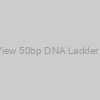 Azura PureView 50bp DNA Ladder - 100 Lanes |
|
AZ-1151 |
Real Time Primers |
100 Lanes |
EUR 140.4 |
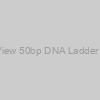 Azura PureView 50bp DNA Ladder - 500 Lanes |
|
AZ-1155 |
Real Time Primers |
500 Lanes |
EUR 277.2 |
 Azura PureView 50bp DNA Ladder - 1000 Lanes |
|
AZ-1155-2 |
Real Time Primers |
1000 Lanes |
EUR 326.4 |
 AzuraView GreenFast qPCR Blue Mix Lo Rox - 200 Rxn |
|
AZ-2301 |
Real Time Primers |
200 Rxn |
EUR 214.8 |
 AzuraView GreenFast qPCR Blue Mix Lo Rox - 500 Rxn |
|
AZ-2305 |
Real Time Primers |
500 Rxn |
EUR 384 |
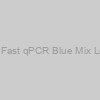 AzuraView GreenFast qPCR Blue Mix Lo Rox - 2000 Rxn |
|
AZ-2320 |
Real Time Primers |
2000 Rxn |
EUR 1195.2 |
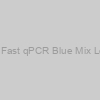 AzuraView GreenFast qPCR Blue Mix Lo Rox - 5000 Rxn |
|
AZ-2325 |
Real Time Primers |
5000 Rxn |
EUR 2817.6 |
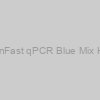 AzuraView GreenFast qPCR Blue Mix Hi Rox - 200 Rxn |
|
AZ-2401 |
Real Time Primers |
200 Rxn |
EUR 214.8 |
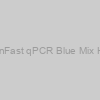 AzuraView GreenFast qPCR Blue Mix Hi Rox - 500 Rxn |
|
AZ-2405 |
Real Time Primers |
500 Rxn |
EUR 384 |
 AzuraView GreenFast qPCR Blue Mix Hi Rox - 2000 Rxn |
|
AZ-2420 |
Real Time Primers |
2000 Rxn |
EUR 1195.2 |
 AzuraView GreenFast qPCR Blue Mix Hi Rox - 5000 Rxn |
|
AZ-2421 |
Real Time Primers |
5000 Rxn |
EUR 2817.6 |
 Mouse Neurotransmitter Signaling Primer Library |
|
MNTS-I |
Real Time Primers |
1 set |
EUR 657.6 |
 Mouse T-Cell Receptor Signaling Primer Library |
|
MTCR-I |
Real Time Primers |
1 set |
EUR 657.6 |
 Mouse Tumor Invasion/Metastasis Primer Library |
|
MTIM-I |
Real Time Primers |
1 set |
EUR 540 |
 Mouse Toll-like Receptor Signaling Primer Library |
|
newitem |
Real Time Primers |
1 set |
EUR 657.6 |
 Mouse Adherin - Tight Junction Primer Library |
|
MATJ-I |
Real Time Primers |
1 set |
EUR 657.6 |
 Mouse Cytokine and Chemokine Receptor Primer Library |
|
MCCR-I |
Real Time Primers |
1 set |
EUR 774 |
 Mouse Epithelial-Mesenchymal Transition Primer Library |
|
MEMT-I |
Real Time Primers |
1 set |
EUR 657.6 |
 Mouse Myeloid Derived Suppressor Cell Primer Library |
|
MMDSC-I |
Real Time Primers |
1 set |
EUR 657.6 |
 Human Epithelial Mesenchymal Transition Primer Library |
|
HEMT-I |
Real Time Primers |
1 set |
EUR 657.6 |
 Human Focal Adhesion Signaling Primer Library |
|
HFCA-I |
Real Time Primers |
1 set |
EUR 657.6 |
 Human Fatty Acid and Lipid Metabolism Primer Library |
|
HFLM-I |
Real Time Primers |
1 set |
EUR 657.6 |
 Human G-Protein Coupled Receptor Signaling Primer Library |
|
HGPCR-I |
Real Time Primers |
1 set |
EUR 657.6 |
 Human Interferon Type I Signaling Primer Library |
|
HIFN-I |
Real Time Primers |
1 set |
EUR 657.6 |
 Human Interferon Type II Signaling Primer Library |
|
HIFN-II |
Real Time Primers |
1 set |
EUR 657.6 |
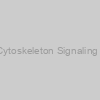 Human Actin Cytoskeleton Signaling Primer Library |
|
HACS-I |
Real Time Primers |
1 set |
EUR 657.6 |
 Human Adaptive & Innate Immune Response Primer Library |
|
HAIIR-I |
Real Time Primers |
1 set |
EUR 657.6 |
 Human Antigen Processing and Presentation Primer Library |
|
HAPP-I |
Real Time Primers |
1 set |
EUR 657.6 |
 Human Adherin - Tight Junction Primer Library |
|
HATJ-I |
Real Time Primers |
1 set |
EUR 657.6 |
 Human B-Cell Receptor Signaling Primer Library |
|
HBCR-I |
Real Time Primers |
1 set |
EUR 657.6 |
These components can subsequently be related to exterior traits (e.g. practical imaging phenotypes) to start to know the make-up of those transdiagnostic threat components. As psychiatric genomic efforts proceed to develop, we will start to realize even higher perception by together with extra fine-grained phenotypes (i.e. symptom-level information) and explicitly contemplating the atmosphere. The end result of those efforts will assist to tell bottom-up revisions of our present nosology.
